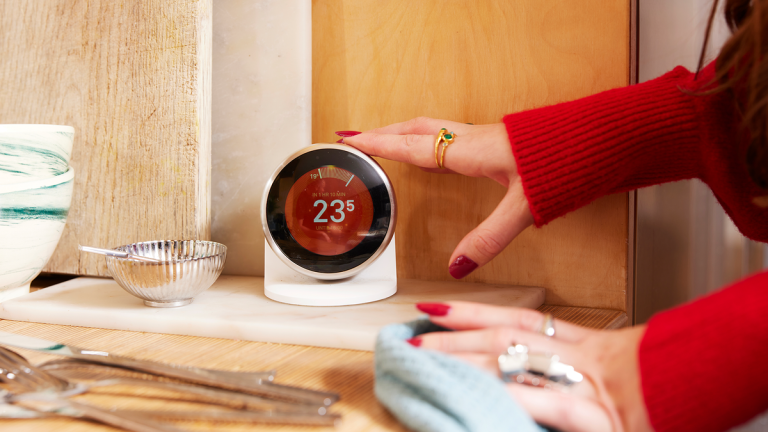Smart Home Week
This article is part of TechRadar's Smart Home Week 2024, where we bring you all the latest news, tips and tricks to help you create the smart home of your dreams.
Few technologies feel more futuristic than a fully connected smart home. With just a few voice commands, a smart home system can turn on your lights to any brightness and color, adjust the temperature, lock the doors, start your coffee machine, tell your robot vacuum to mop your kitchen floors, queue up a TV show, close the window blinds, give you a live view of your security cameras, and more.
Going a step further, much of this can be fully automated, with lights and thermostats adjusting based on the season and weather forecast, door locks and security systems automatically responding to your smartphone's location, etc. This is something we could only dream of 10 years ago, but with systems like Amazon Alexa, Google Home and Apple HomeKit, it's all completely possible now.
But it's not always that easy. We're used to our smartphones, TVs, and computers “just work,” but smart homes can be complicated and confusing. Hundreds of companies make thousands of products, and each brand uses its own app to control them. And while a single system or voice assistant can control many smart home devices, no one system is compatible with all products. With the rollout of Matter, however, the best smart home devices are becoming increasingly interoperable.
Don't worry, TechRadar is here to guide you through setting up your smart home, covering basic things like telling your smart speaker to turn on your light bulbs, to configuring more advanced systems like automated routines to keep your home clean and safe.
How to control your smart home: smartphone app or smart speaker?
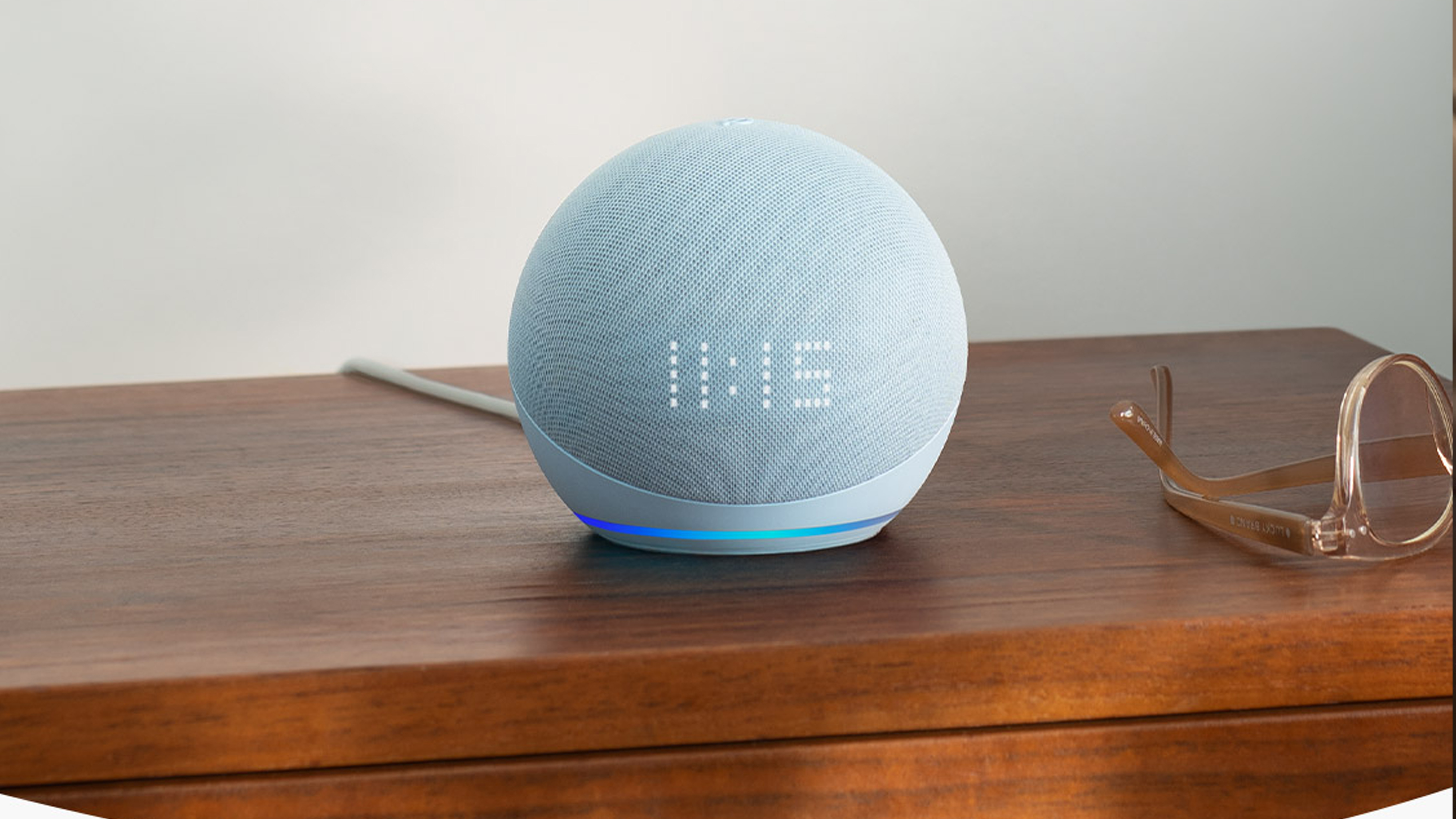
(Image courtesy of Amazon)
Nearly every smart home product, from light bulbs and smart plugs to vacuums, thermostats, door locks, irrigation systems, security cameras and motorized blinds, can be controlled by an app on your smartphone. Some of the best-known examples are the Philips Hue app to control your smart lighting, the Nest app to adjust your thermostat, and the Eufy Clean app to run your robot vacuum. If you only have a few smart home products (maybe a few lights, a few plugs and a thermostat), you can just stick these apps in a folder on your phone's home screen and call it a day.
Or you can take the next step and adopt a smart home platform. The easiest first step is to invest in one of the best smart speakers, such as an Amazon Echo, Nest Audio, or Apple HomePod. Not only can they play music, answer questions using a built-in voice assistant, and set timers while you cook, these speakers also act as smart home hubs.
This means it can connect to and control a variety of smart home devices from other manufacturers using wireless standards like Zigbee and Matter. This allows HomePod owners to ask Siri to turn on their lights instead of opening the lighting app on their smartphone, and Echo owners can ask Alexa to turn on a smart plug connected to a fan without opening the app that controls the plug. You might also want to consider one of the best smart displays, like the Nest Hub or Echo Show. These work in the same way as smart speakers, but also have a screen that lets you control your smart home devices with taps and swipes.
Simple Smart Home Devices: Getting Started
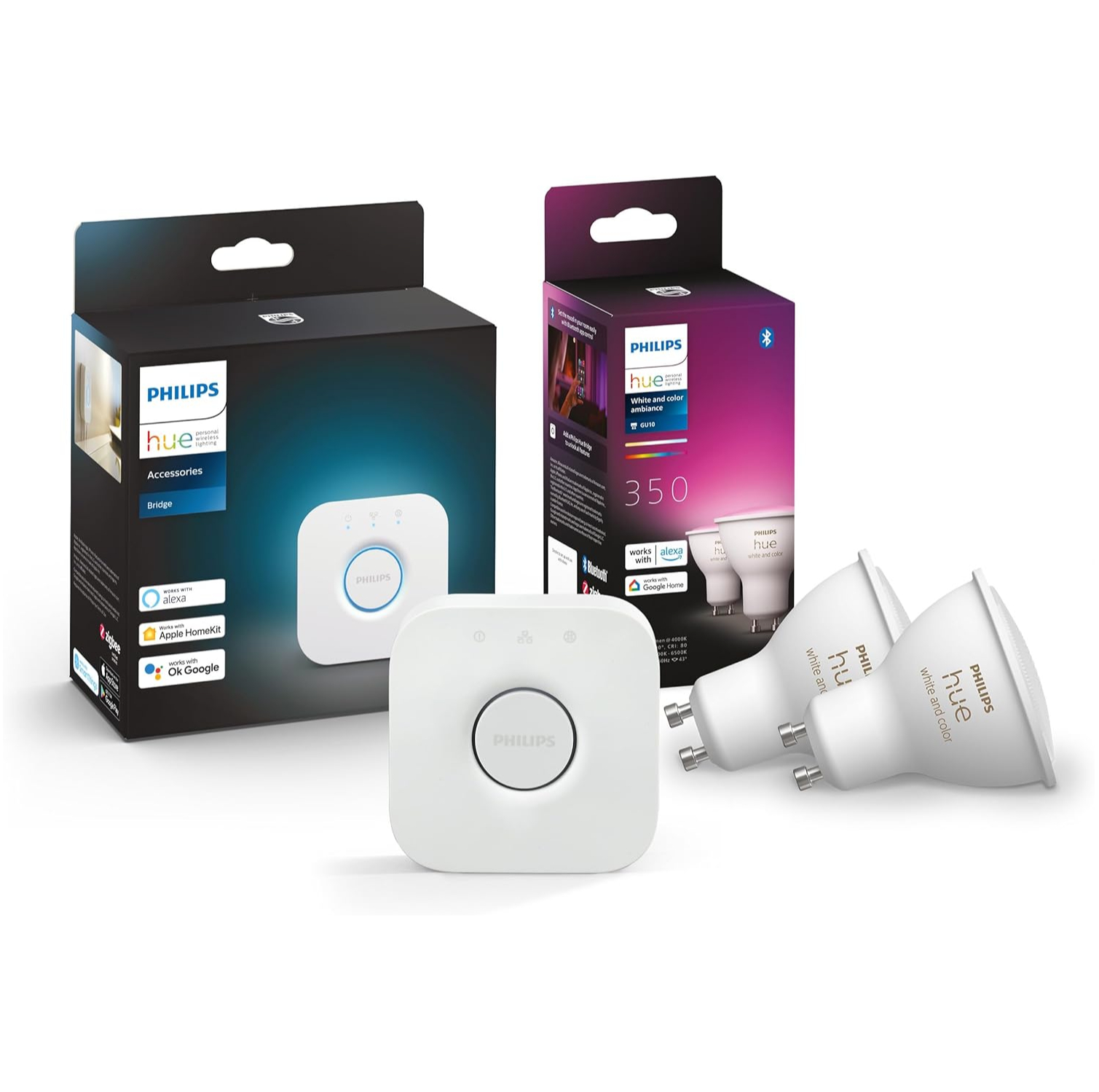
(Image courtesy of Philips)
Asking your voice assistant to turn on one of the best smart lights is often used as the simplest example of smart home technology, and for good reason. Such systems are easy to set up and relatively inexpensive, simple to use, work reliably, and make you feel like you're living in the future every time it happens. It's a great example of how smart home technology can be not only convenient, but also satisfying to use.
First, choose the voice assistant and platform you want to use. If you have an Apple family, your best bet is to buy a HomePod or HomePod Mini, which act as both a Siri-enabled smart speaker and a hub for Apple's HomeKit platform. The Apple TV 4K can also be used as a HomeKit hub, as can an iPad.
Alternatively, if you're an Android user, a Nest Audio speaker or Nest Hub smart display with access to the Google Assistant is your best bet. Or, if you want to connect to Amazon's Alexa and Ring platforms, you'll want to buy one of the Echo speaker or Echo Show display models. In general, Google Assistant offers the most natural voice control, Alexa can access the most smart home devices (though Amazon's own devices tend to be the most affordable), and HomeKit is your best choice if you already have multiple Apple products.
Once you've chosen your system and purchased your smart speaker or display, choose your simple smart home devices like light bulbs and plugs. Examples include Philips Hue light bulbs and TP-Link smart plugs. Make sure your devices all work with your chosen system; each device's dedicated logo is usually prominently displayed on the device's packaging or on the manufacturer's website.
First, you set up the device using the manufacturer's own app, like Hue or TP-Link's Kasa app. Then you follow the instructions (usually within the same app) to add the device to your smart home system (Alexa, Google Home, Apple Home app, etc.). Once that's done, you won't need to use the device's own app (except maybe to manage the occasional software update or factory reset); instead, you just ask your smart speaker (or the same voice assistant on your smartphone) to turn on a plug or brighten up a light bulb.
How to Set Up Automation in Your Smart Home
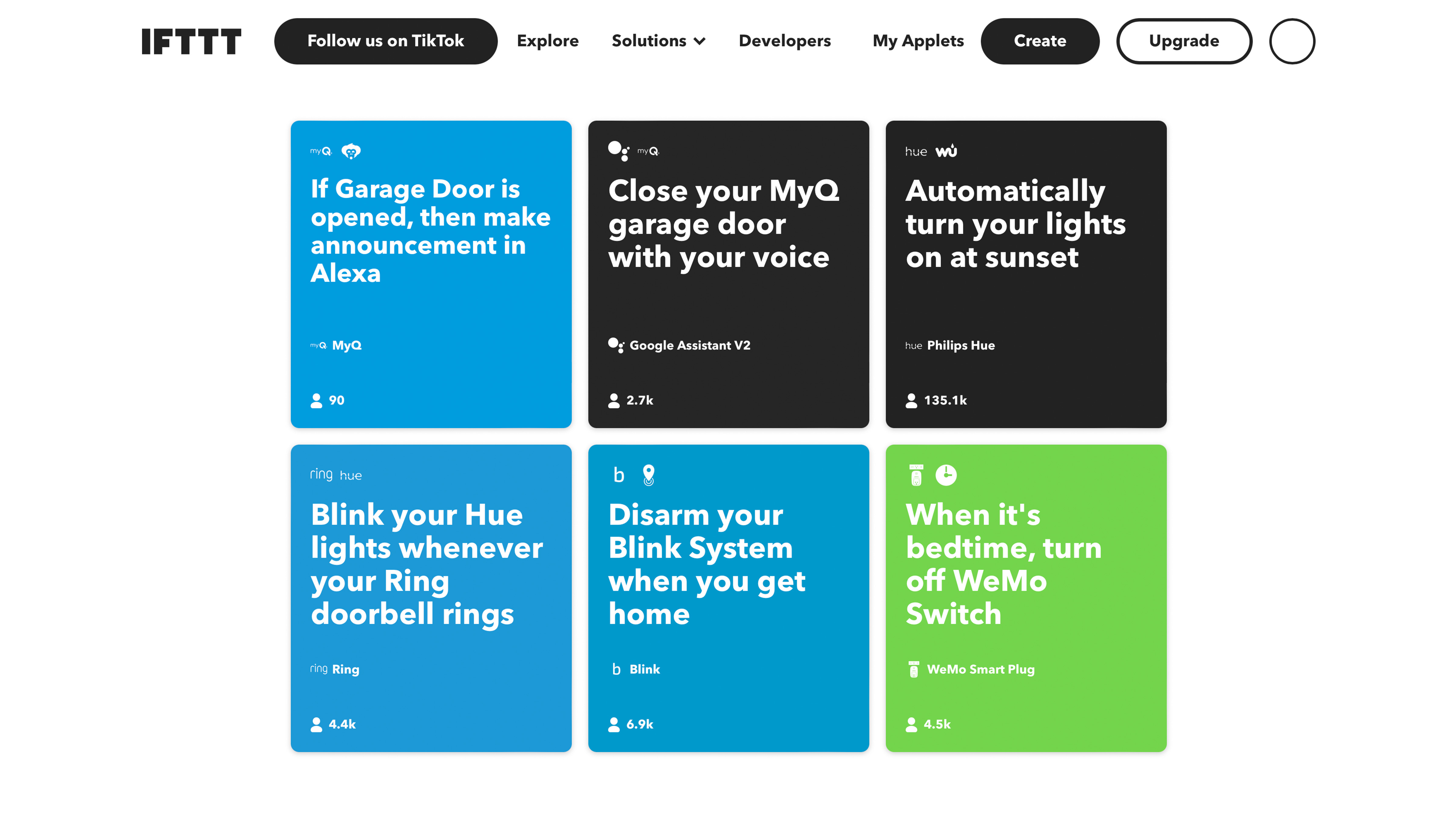
(Image courtesy of Future / IFTTT)
Now let's step up a gear and look at automation, where sensors and other parameters such as the time of day, weather forecasts and smartphone location can all affect the behavior of your smart home.
A simple example would be using a smart thermometer or air quality monitor like the Netatmo Weather Station to activate a smart plug connected to a heater when the temperature drops below a certain level. Or you could use the same setup to turn on a plug connected to a fan when it gets warm. The magic that makes this happen is an automation platform like If This, Then That (IFTTT).
Alternatively, you can create so-called routines in the Alexa app (called automations in the Apple Home and Google Home apps), which are like recipes where inputs like the time of day, weather forecasts, motion sensor activations, and voice commands result in outputs like closing the motorized blinds when a certain temperature is exceeded, or dimming the lights and lowering the thermometer when you tell your voice assistant good night.
Save energy with your smart home
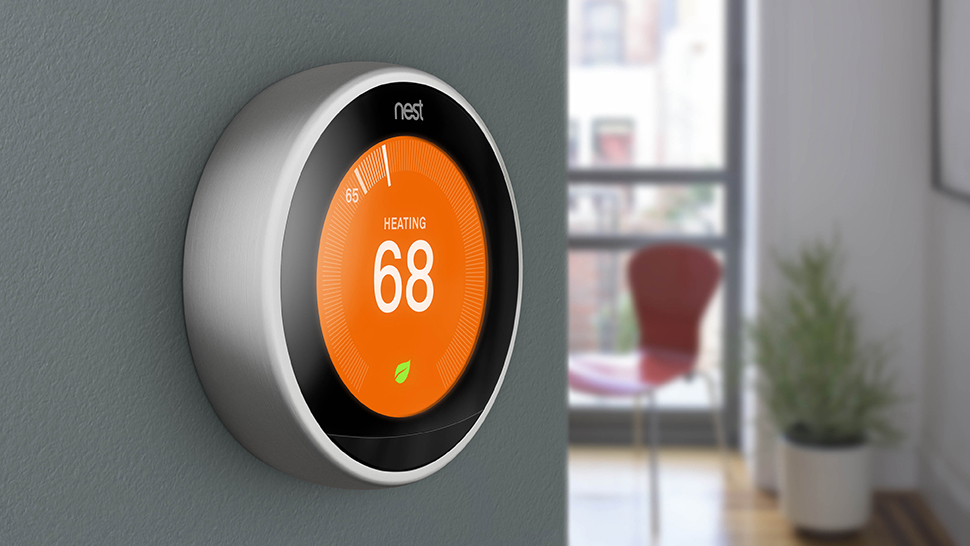
(Image courtesy of Nest)
Home Energy and Air Quality Guide
Want to save money and make your home more energy efficient? Smart home technology, like the best smart thermostats and best smart plugs, can help. As we've already mentioned, fans, heaters, blinds, and thermostats can help you maintain a consistent temperature in your home and reduce your energy bills.
Of course, it'll cost you a fair bit to get it all installed, but once that's done, you'll see your energy bills go down. Nest's smart thermostats are famous for being able to dial back your heating and cooling usage a little, keeping you comfortable while cutting down on energy consumption. Similarly, Tado sells wireless radiator controllers to adjust the heating in each room, and various connected thermostats can be set to stop heating or cooling when you're away, based on the location of your smartphone.
More simply, smart plugs can be set to go on timers and can be accessed even when you're away, allowing you to switch off appliances that you forgot to turn off when you left, while smart irrigation systems ensure that your garden is only watered when needed and that you don't waste water when it's raining.
Clean your home with smart devices

(Image courtesy of iRobot)
Robot vacuums from the likes of iRobot and Eufy have been around for years, but the latest models are especially smart. Some of the best robot vacuums even come with a dedicated dust bin that allows you to empty your cleaning solution while still charging the battery, while others can also double as a mop, with a dedicated water tank that you can empty and refill before drying the mop and getting it working again.
Many robot vacuums have schedules that you can program via a smartphone app, and some even use imaging technology to create a map of your home, making it easy to divide your floor plan into rooms and tell the robot to vacuum (or mop) specific rooms as needed.
The IFTTT automation platform can be set up to control iRobot's Roomba vacuums. For example, you can set your Roomba to start cleaning when you leave the house, stop when you get home, or pause when someone presses your Ring video doorbell. Similarly, you can set your Roomba robot through IFTTT to pause cleaning at the start of a calendar event (such as a meeting or video call) and continue cleaning when the event ends.
Strengthen your home security with smart devices
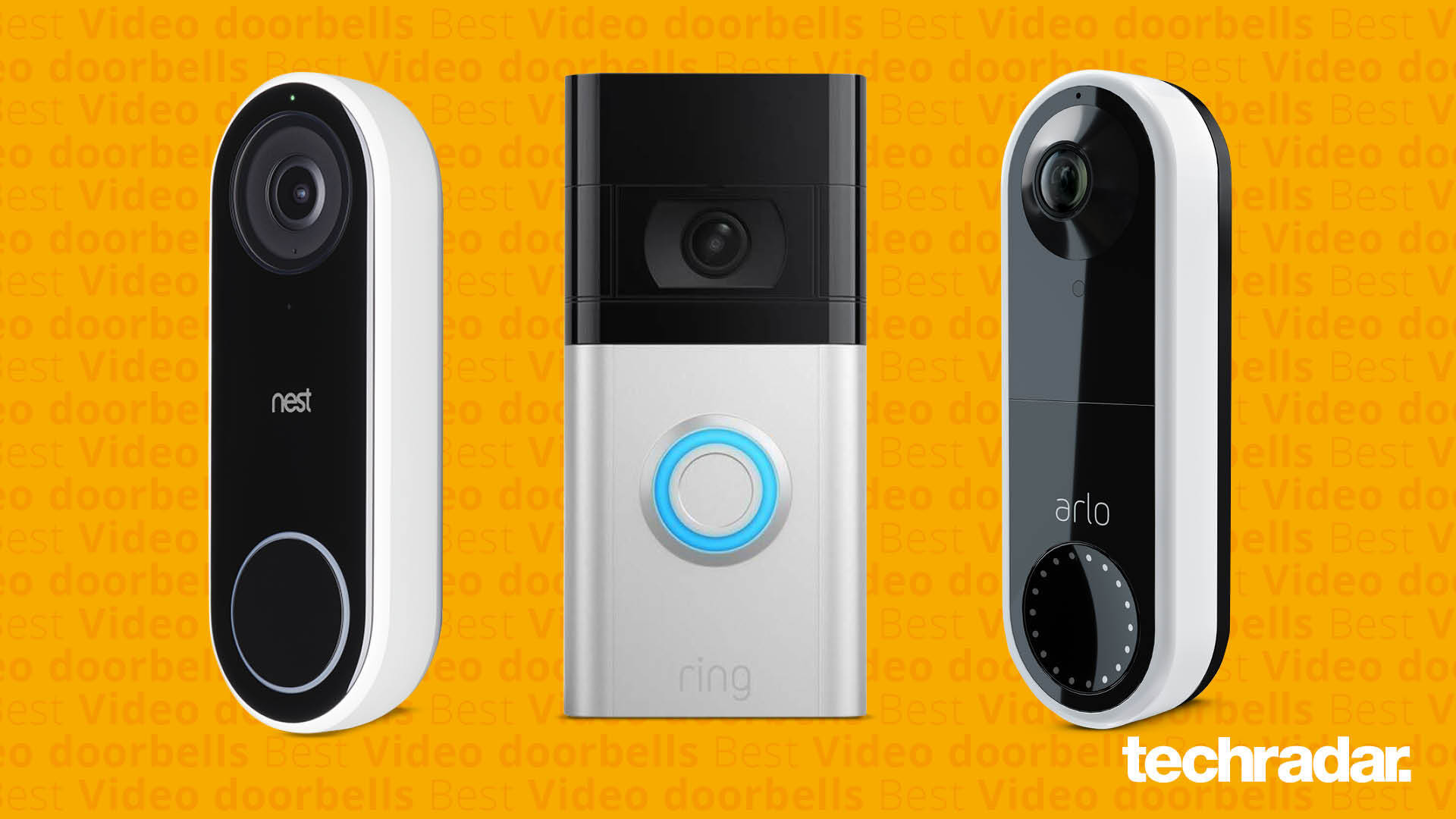
(Image courtesy of TechRadar)
Smart Home Security Guide
Finally, let's look at smart home security. Devices in this category include smart door locks, video doorbells, motion sensors, security cameras, and sensors that know if your doors and windows are open or closed.
A smart door lock fits into your current door and uses many of your existing components, but adds a battery-powered mechanism to operate the lock, allowing the door to unlock when you approach (because it knows the location of your phone) and lock when you issue a command to a smart speaker. Additionally, many smart locks let you grant temporary access to others, who can also use their phone to enter.
Additionally, video doorbells from Ring, Nest, Yale, and others can stream live video to your phone when a visitor presses the bell and double as security cameras. The aforementioned companies also sell smart security cameras for indoors and outdoors, all of which can be accessed through an app on your phone and viewed through smart displays like the Amazon Echo Show or Nest Hub. Some products even work with Apple TV to display live video on your television.
Adding a connected alarm system like Simplisafe can equip your smart home with motion sensors, door and window sensors, smoke detectors, and more. There are also water and temperature sensors, and key fobs that let you arm or disarm the system with just a tap.
These are all just a few examples of what a full-fledged smart home can do, and while it can seem overwhelming at first (especially as you start learning about new wireless standards like Zigbee and Matter), you can start simple and work your way up.
A smart speaker and light bulbs alone are enough to unlock the power of voice-controlled home automation, after which you just need to build up your system gradually, taking care to only install devices that are compatible with your existing system.

